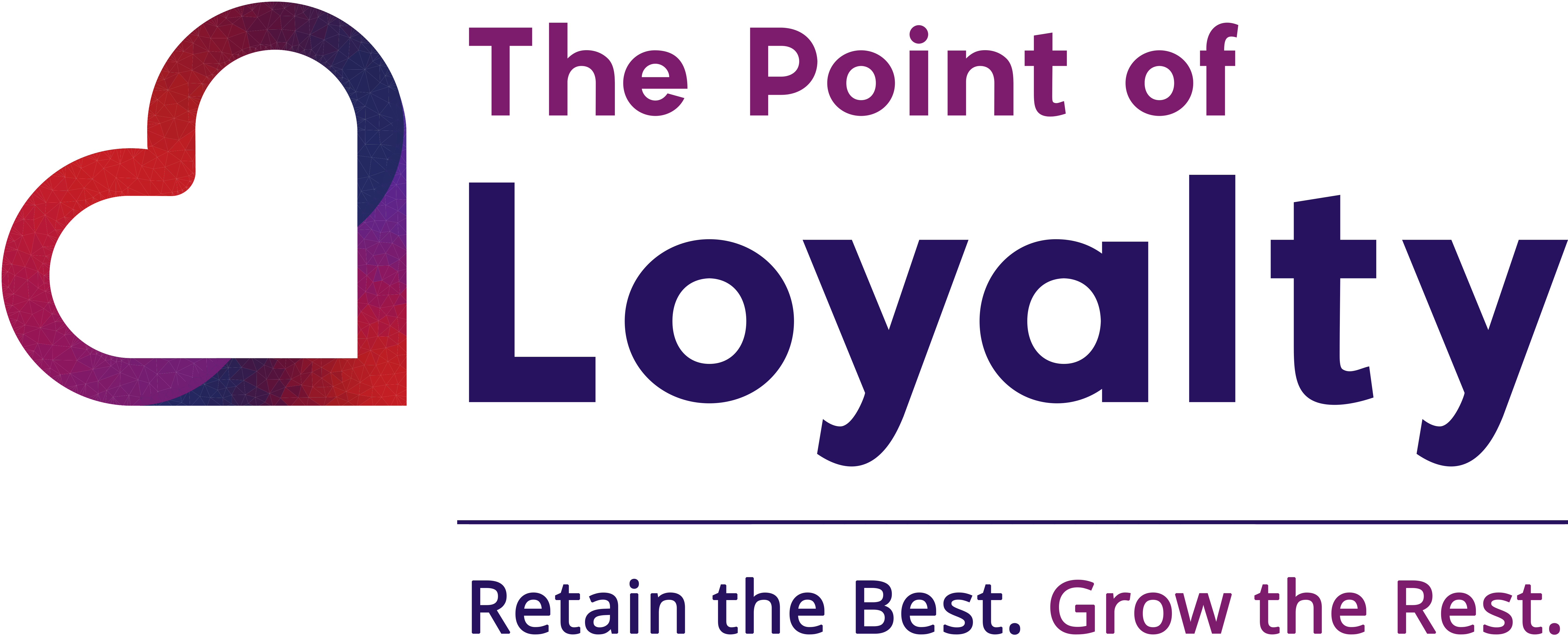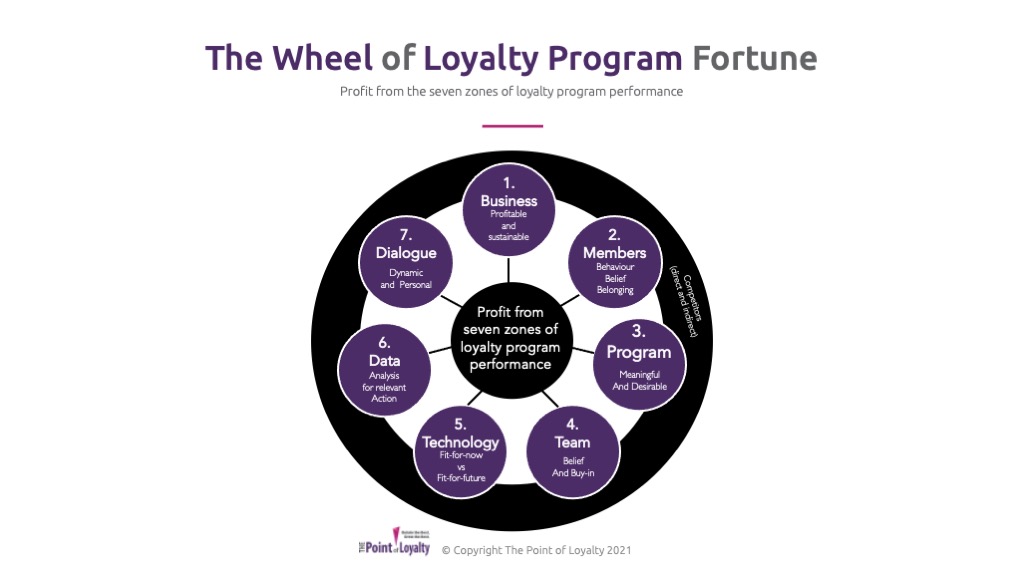“Strategy before structure”
Adam Posner
Before you dive into what your loyalty program structure, benefits and rewards are, carefully consider the strategy.
To guide you along the strategic process, here are the Seven Zones of Loyalty Program Performance.
While the seven zones are dependent on each other, the sequential order is fluid. A loyalty program’s development can move to different zones as the process of design and deployment progresses.
Zone 1: Business
Zone 1 focus is the business = The program is a profitable and sustainable asset.
Profitable = generates incremental profit
Sustainable = built for the long-term
Gain clarity on the vision, goals and measures of success for your program.
- Why do you need a program?
- What problems will a program solve for the business and for customers?
Ensure the senior leadership team are committed to the program as a business growth asset and not only a marketing initiative.
Build out the financial ecosystem so you have real-time visibility of the program’s profitability (Profit and Loss), cash flow and balance sheet.
Zone 2: Members
Zone 2 focus are the members = Build behaviour, belief and belonging.
Behaviour = transacting with your brand. Identify your value segments and review their purchase behaviour with an RFM analysis (recency, frequency and monetary)
Belief = emotional connection to your brand
Belonging = identifying with your brand purpose
Who are your customers? Understand your customers - their transactional behaviour, emotional connection to your brand and sense of belonging to your brand.
Zone 3: Program
Zone 3 focus is the program proposition = The program is designed to be meaningful and desirable to members. It suits the objectives of the program that were defined in Zone 1 and who the program is for Zone 2.
Design a Quality Program Proposition that is meaningful and desirable to your members.
Meaningful = the program is relevant to your members lives
Desirable = being a member of the program is worthwhile
There are four factors to a Quality Program Proposition:
- Solve a customer problem or pain point:
Problems in the world around us (for example, sustainability), problems in the life of a customer and the problems or points of friction when they experience your brand.
2. Build a program structure to meet the strategy based on five pillars:
1. Visibility - visible or invisible program
2. Model - uniquely owned or borrowed from a coalition program
3. Structure - flat or tiered
4. Type - collect and cash-in or package of benefits and
5. Payment - paid or free.
Combinations of these pillars are common.
3. Blend the six currencies customers care about to move them from transactional to emotional connections:
The rewards and benefits of a program are based on six currencies customers care about and they are (with the voice of the customer):
1. Financial: “Show me the money”
2. Experiential: “Add moments of magic to my life”
3. Functional: “Save me time. Make life easy for me”
4. Personal: “Show me you know me. Make me feel special”
5. Choice: “Let me choose my rewards”
6. Social: “Connect me with community and causes”
4. Execute an exceptional experience:
From member onboarding to ongoing interaction ensuring the experience is simple, personal and valuable, surrounded by surprise and delight!
Add to the four factors, the need to make your program a proof point of your brand proposition and distinctive from competitors.
Zone 4: Team
Zone 4 focus is the team = The program needs team belief and buy-in
Team belief and buy-in = everyone in the business believes in the benefits of the program to the business and to members.
Your team are critical to the ongoing success of the program. They need to enrol in the program, know what’s expected and the metrics to achieve, be able explain the program clearly and succinctly and be champions of the program.
Zone 5: Technology
Zone 4 focus is the technology = The program is enabled by technology that is fit-for-now vs fit-for-future.
Does the current technology architecture provide the opportunity to create the best possible member experience, personalisation and relevant messaging for now and for the future? This will depend on how Zone 3 – the Quality Program Proposition has been designed to suit the technology infrastructure.
Zone 6: Data
Zone 6 focus is data = Data captured for analysis and relevant action.
Integrated into technology enablement is how the data is captured, stored and accessed to analyse for insights to take relevant action. Reporting of results and program measures of success from the data analysed is key here.
Data management and compliance is an important layer of this zone.
Zone 7: Dialogue
Zone 7 focus is dialogue = Member dialogue is dynamic and personal.
Dynamic = real-time.
Personalised = relevance to the member.
Using the data to drive dynamic and personalised communication.
In summary, the Seven Zones of Loyalty Program Performance provides you with a guiding framework to define, design and deploy a profitable loyalty program.
Have a happy loyalty day!

